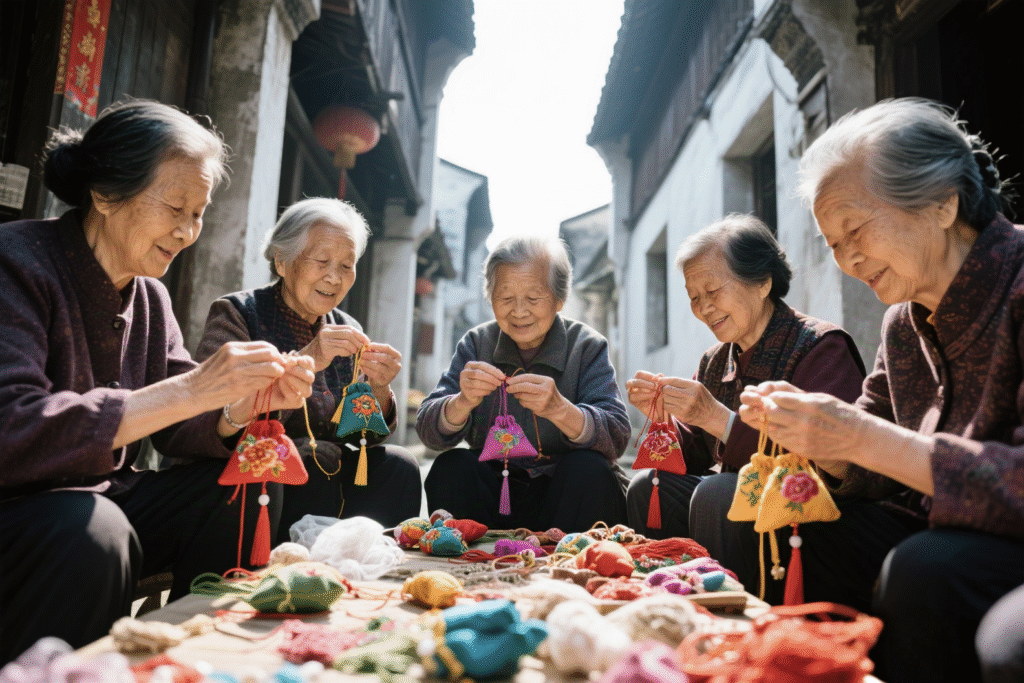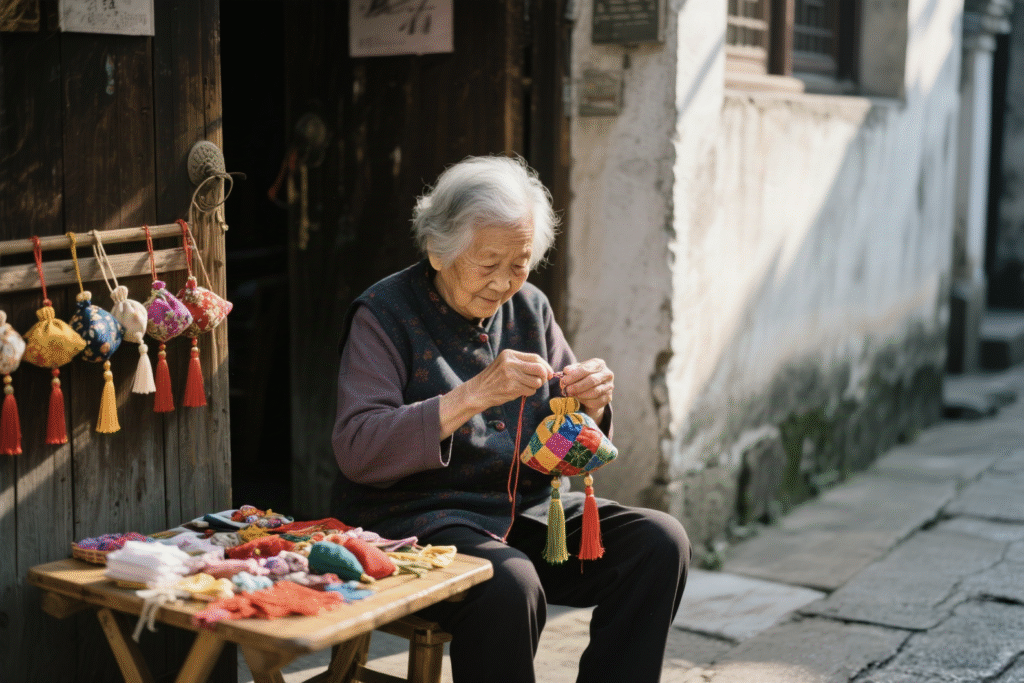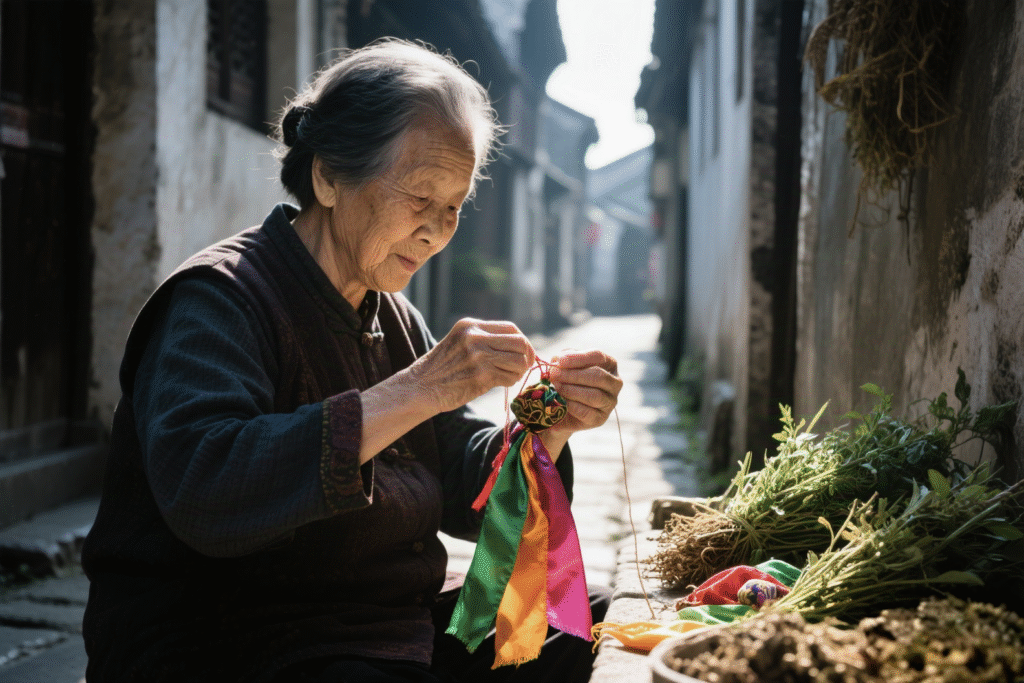Fragrant Elegance in Sleeves:
The Warding Grace of Chinese Scented Sachets

Before the Dragon Boat Festival, in a Jiangnan alleyway, grandmothers sit stitching by their doors. Colorful silk or cotton transforms into pouches—diamond-shaped (like zongzi), heart-shaped, or gourd-shaped—stuffed with aromatic herbs (芳香草本): mugwort, calamus, angelica root, patchouli. Vibrant silk threads bind them, tassels swaying below. These are xiangbao (香包, also called xiangnang, pèiwéi), brimming with festive spirit and auspicious meaning.
Fragrant Botanical Fillings
Scented sachets hold deep roots in China, merging utility, adornment, and spiritual belief into folk art imbued with TCM wisdom. Their soul lies in the fragrant botanical fillings. Ancient wisdom held these scents could ward off evil, purify air, refresh the mind, repel insects, and prevent epidemics (some scientifically validated). Worn especially during humid seasons like Dragon Boat Festival, they also served as love tokens, talismans, or refined personal ornaments—embodying prayers for health and safety.

Modern sachets preserve their protective symbolism while evolving into exquisite accents of Chinese elegance. Designs now embrace contemporary flair, and fillings diversify: calming lavender or rose, invigorating mint or lemongrass, even precious spices.
Hand-Embroidered Silk Sachet

A hand-embroidered silk sachet, hung in a car or wardrobe, whispers subtle fragrance; a herbal mosquito-repellent sachet (草本驱蚊香囊) adorns strollers or backpacks, blending freshness with function; a tailor-made antique-style sachet pendant makes an elegant gift. These lingering scents—a fragrant imprint of Chinese tradition—reflect the modern pursuit of health-infused refinement.